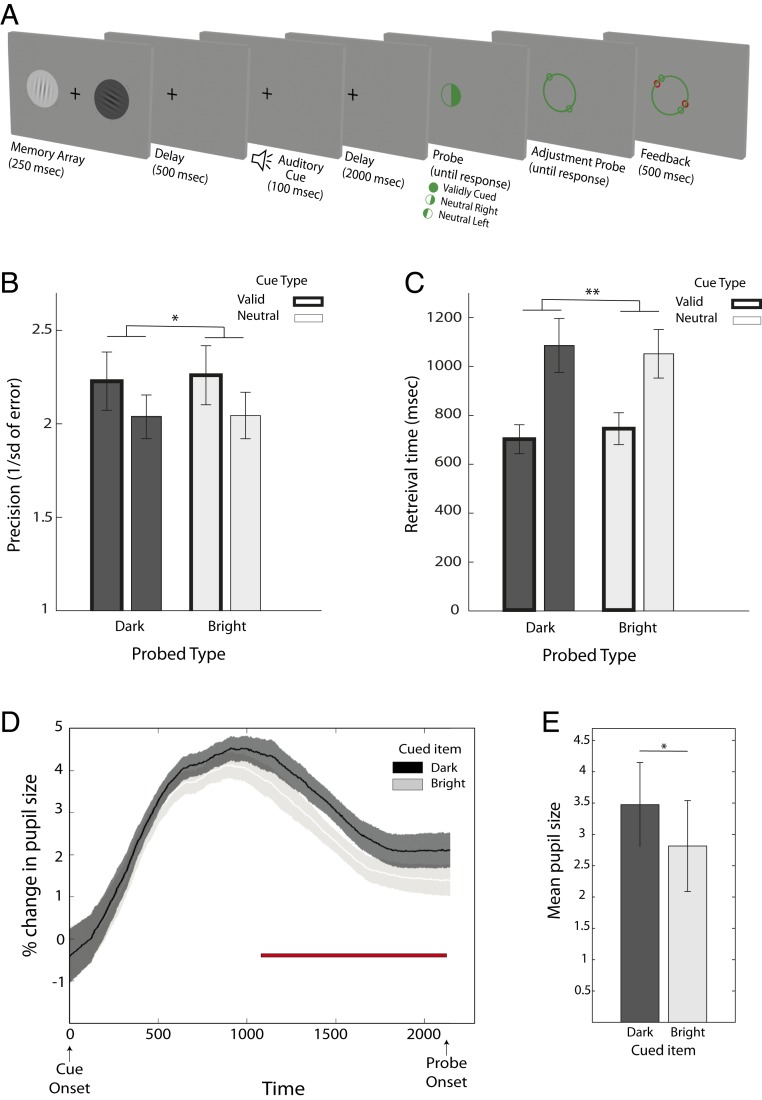Fig. 2.
Exp. 2 task schematic and behavioral results. (A) Task was similar to Exp. 1, except for the meanings of the cues and the appearance of the probe stimuli. The cues either indicated the side of the to-be-probed item or was neutral. At probe, participants were presented with either a half-filled circle, indicating the spatial location of the grating that had to be recalled, or was a full circle in validly cued trials, ensuring that participants paid attention to the cue. (B) Mean precision as a function of the probed item’s side (bright/dark) and cue type (valid/neutral). (C) Mean retrieval time as a function of probe item’s side and cue type. (D) The influence of cue on pupil diameter. Comparisons of these traces with each other are shown. Validly cued darker gratings elicited a larger change in pupil size compared to validly cued brighter gratings. The shaded area indicates the SE within subjects. (E) Mean pupil size from 500 ms after cue onset until probe was larger for trials in which the darker item was cued compared to trials in which the brighter item was cued. Error bars indicate SEM, calculated across participants. *P < 0.05 and **P < 0.005.

